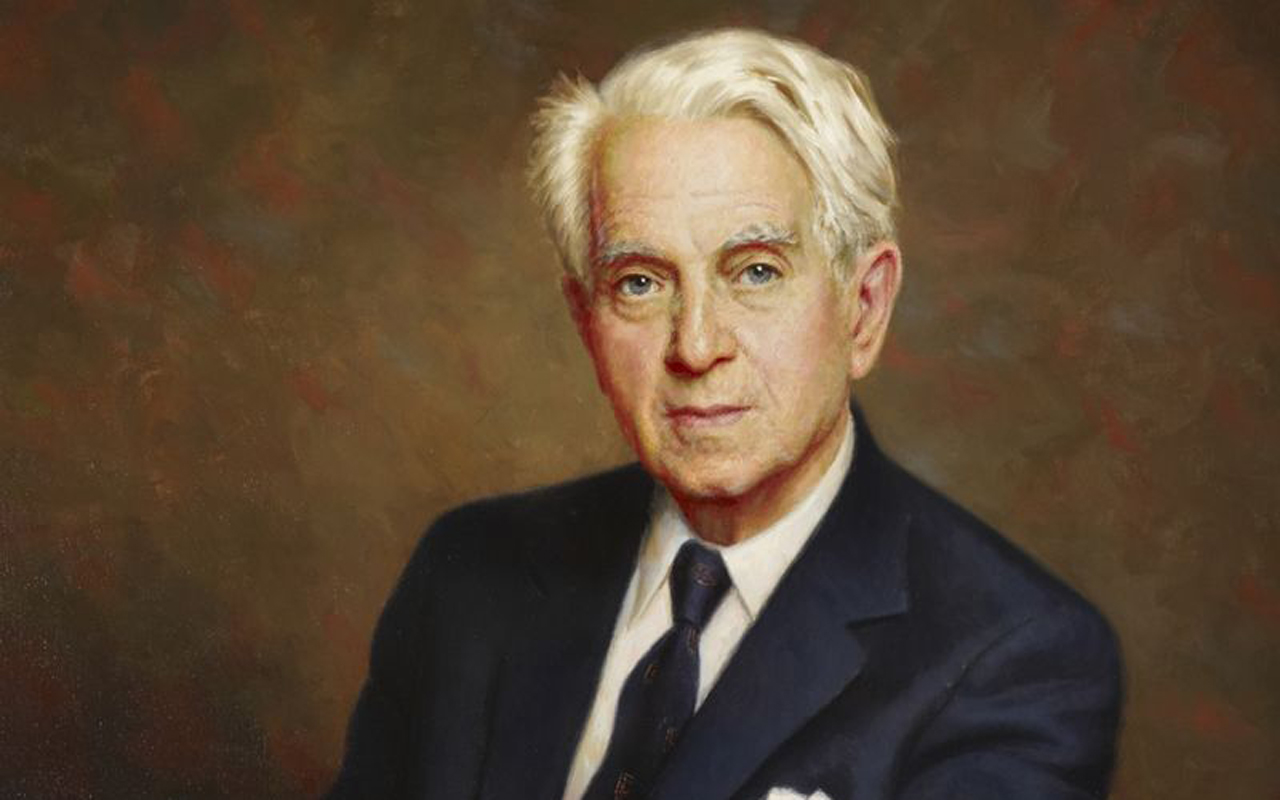
The man behind the music: Herbert Howells
Following on from my essay on the accents used by Herbert Howells in ‘Pageantry’, I decided to do some further research on disputed aspects of the score.
To this end I visited the Royal College of Music where with the agreement of Dr Peter Horton I was able to view Howells original sketches.
First example:
The first example is in the penultimate bar of the first movement. There is an editor’s note that states “…we may surmise that his intentions were for the p to begin at the beginning of the dotted quaver”.
I would dispute this.
In the orchestral version he writes sfp cresc for the trombones on this note, as in the example below [fig 1].
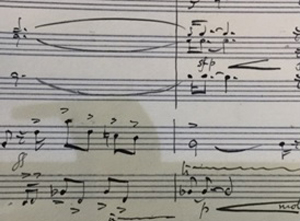
Orchestral version
From this I am assuming that it would be more logical for the dotted quaver to be played sfp cresc in the original brass band version [fig 2].
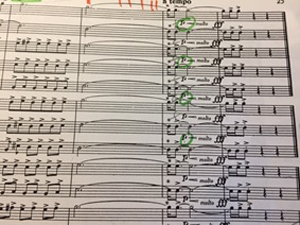
Brass band version
I know that the orchestral version followed the brass band original, but his brass writing in the orchestral version suggests that my assumption could be correct.
Also, in terms of performance this creates a more natural effect.
Second example:
The second disputed section is the infamous 3/4 bar, 5th bar of 13, in the last movement.
In the original sketch [fig 3] it is merely marked 3/4 with accents.
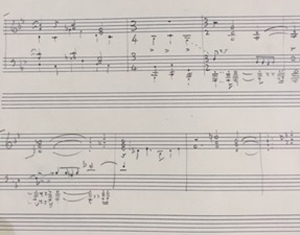
Original sketch
This would suggest to me that crotchet equals crotchet is a much more likely intention. Further to this argument, Howells uses the triplet crotchet form, indicated clearly by a bracket and 3, in the second movement.
I can see no reason why, had he intended these three notes to be in triplet form within a minim, he would not have indicated this in the same way.
In addition to this, it is my opinion that, over the phrase, it makes more musical sense to maintain crotchet equals the previous crotchet through this bar.
In respect of these points, I would suggest that the instruction above this bar of dotted minim equals minim, in the brass band, score is spurious and an editorial mistake.
Jousts:
The third area of interest is the movement entitled ‘Jousts’. This was originally called ‘Prentices Dance’ as in his sketch for this movement [fig 4].
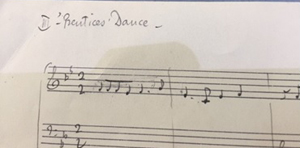
The reason for the change in title may well be, and this is purely supposition on my part, editorial or perhaps, as he worked through to a finale, he felt that the original dance like character had changed sufficiently, to require a change of title.
The original title, ‘Prentices Dance’, would suggest that this movement should begin in a dance like style, and possibly less aggressively than the title ‘Jousts’ might imply. There are of course dance like figures throughout this movement.
Scoring:
Finally, as regards the question of who scored this work for brass band, I tend to agree with Geoffrey Brand that it was probably Howells himself.
The evidence of the sketches suggests that Howells had gained a good knowledge of the instrumentation and their best use (See his indications in the sketches below [fig 5 & fig 6]. Howells or editors obviously changed their minds about mutes in the final edition, perhaps due to availability.)
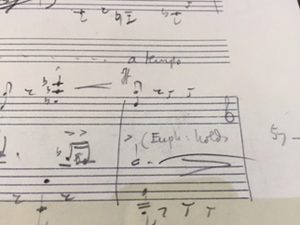
Figure 5:
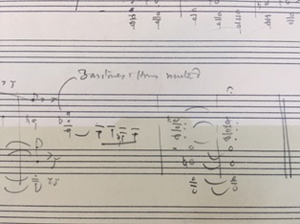
Figure 6:
Final word:
In a final word, concerning the addition of the percussion parts, Philip Wilby, himself a pupil of Herbert Howells, took the percussion parts as in the orchestral version of the ‘King’s Herald’ and created new parts for the other movements.
I can find nothing disadvantageous to the music in their inclusion, and consider them a fine addition, adding clarity and colour. I am sure that Howells would have been delighted.
I hope that these few notes will help in the preparation of this fine work. Whilst some may consider that these conclusions are merely matters of opinion, they are drawn out of reasonable research using the available material.
I would like to thank Dr Peter Horton at the Royal College of Music Library for his help in preparing this paper, and also for giving his permission to use the sketches.
The printed illustrations have been used with the permission of the publisher Novello & Company Limited and reproduced with the kind permission of the Literary Executors of the Herbert Howells Trust.
Paul Cosh













